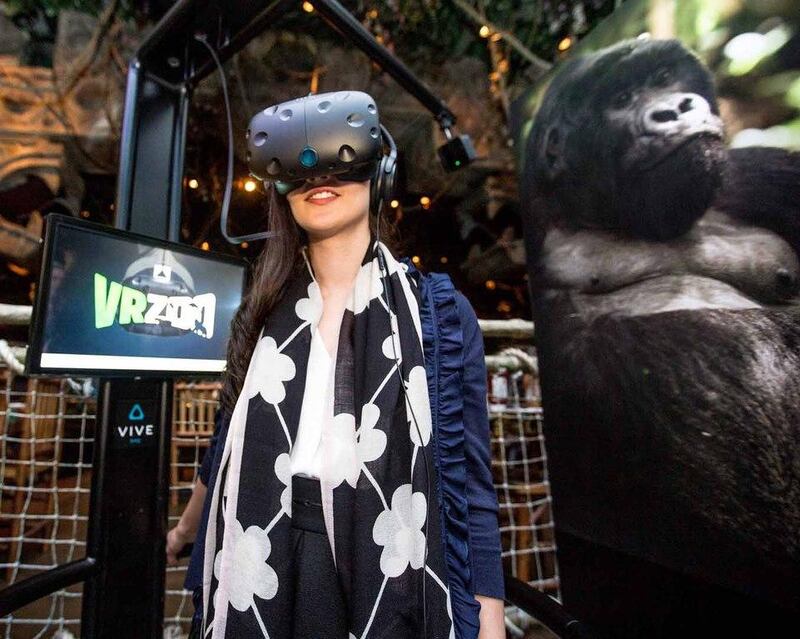DUBAI // Ever fancied taking a dip with a pod of seals without getting wet, or how about getting up close and personal with a pride of lions without the fear of ending up as their lunch?
A new virtual reality experience at Dubai Aquarium and Underwater Zoo is giving visitors a glimpse into the lives of endangered species and their habitats.
Paul Hamilton, general manager and curator of the aquarium, believes the technology can help to build connections between people and animals, leading to greater awareness about conservation.
“The idea behind the VR Zoo is to get people face-to-face with some of the most endangered species on the planet,” he said. “Most people live and work in urban environments, so they’ll be lucky to see even a mouse. This loss of connection between us and nature means we aren’t aware of a wide range of species that are facing extinction or have become extinct. But, by using technology as well as zoos and aquariums to bring people into contact with these animals we can raise awareness of them and begin work to protect them.”
The virtual reality experience features videos of 12 endangered animals, including gorillas and seals, filmed using special 360-degree cameras that place the headset wearer in the middle of the action. This allows them to observe as elephants take water and white lions feed on a springbok.
“Normally, you would expect the BBC to spend years getting footage of animals for documentaries, but we managed to get it done in six months,” Mr Hamilton said.
Film crews travelled to Uganda, South Africa, the Maldives, Mafia Island in Tanzania, Australia and Egypt to get footage.
“We had to place the 3-D camera at locations where the animals were then wait for them to see it,” he said.
“We got some great stuff where they got up very close to the cameras and that will be reflected in the experience, with the user getting very close to the animals.”
People wearing the virtual reality headset have 360-degree range of vision as they watch the animals in their natural habitats and as a narrator highlights the key issues affecting the species.
More species will be added to the video list each year, and the attraction will stay on top of the latest technology.
Visitors are also encouraged to try the interactive CGI experience where they can walk around underwater settings and interact with fish, whales and giant squid.
In all, there are 13 360-degree stalls and six CGI cubicles.
Ryan Fowler, from the Philippines, was impressed by what he saw. “The definition was a lot better than I was expecting and it really feels like you’re with the animals,” he said. “I saw white lions and you don’t realise how big they are. The virtual reality really gets you close to them.”
For more details, visit www.thedubaiaquarium.com
nhanif@thenational.ae






